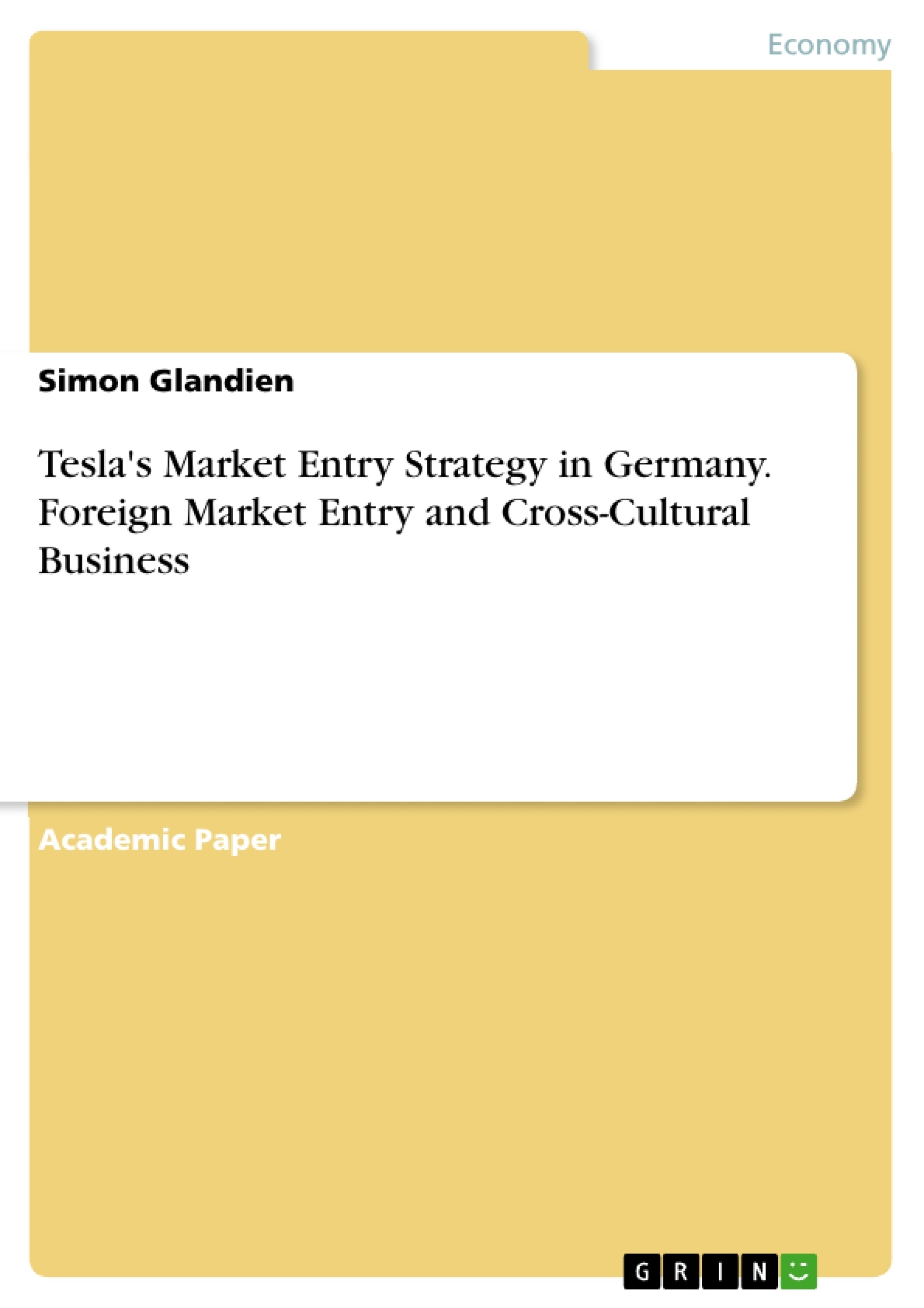The purpose of this paper is to analyze and evaluate the market entry of Tesla Inc. in Germany. In November 2019, Tesla revealed to build a European production plant on the outskirts of Berlin in Germany. The aim of this paper is to give account to the foreign market entry of Tesla Inc. in Germany. This leads to the following research question that guides this paper: What could be business success factors and threats of Tesla's strategy to enter the German automotive industry market?
Tesla Inc. (former Tesla Motors Inc.) is a car manufacturer and sells fully electric vehicles, energy storage systems as well as installs, operates and maintains solar and energy storage products (Reuters, n.d.). The company was founded in 2003 by a group of engineers. In 2008 Tesla launched their first electric vehicle to the market (Tesla, n.d.). “Tesla’s mission is to accelerate the world’s transition to sustainable energy”, so the car manufacturer.
So far most of the Tesla vehicles are produced and assembled in the United States at its main Tesla Factory in Fremont, California. To that Tesla operates other, multiple production and assembly plants, named Gigafactory, such as in Fremont, California (Giga Nevada) and in Buffalo, New York (Giga New York). Recently, in 2019, Tesla opened its first Gigafactory outside the American region in Shanghai, China (Giga Shanghai). A strategic step to internationalize the company and to enter the Chinese market.
This strategic action can be explained by the fact that China is the largest car market in the world and the government is speeding up the expansion of electric mobility. Furthermore, manufacturing in Shanghai saves Tesla from having to transport its vehicles overseas and avoids import duties incurred in China for cars from the United States. However, the company is not just expanding its manufacturing into China.
Inhaltsverzeichnis (Table of Contents)
- Introduction
- Market Overview
- Environmental Analysis
- PESTL Analysis
- Theory of National Competitive Advantage of Industries
- The Diamond Model of the German Automotive Industry
- Major Success Factors and Threats
- Conclusion
- Implication
- Bibliography
- Appendix
- Passenger car production and passenger car registration
- PESTL Analysis
- Premium Car Production by Country
- German OEM and Supplier Density
Zielsetzung und Themenschwerpunkte (Objectives and Key Themes)
This paper aims to analyze and evaluate the market entry strategy of Tesla Inc. in Germany, specifically focusing on the success factors and threats associated with their entry into the German automotive industry market. The study seeks to identify and understand the key drivers and challenges of Tesla's market entry.
- Tesla's market entry strategy in Germany
- Environmental analysis of the German automotive industry
- Success factors and threats for Tesla in the German market
- Strategic implications and potential challenges
- Impact of Tesla's entry on the German automotive landscape
Zusammenfassung der Kapitel (Chapter Summaries)
The first chapter provides an overview of Tesla's operations, key financial performance figures, and the overall automotive market landscape. It highlights Tesla's growth trajectory, revenue development, and product portfolio, including the successful launch of the Model 3.
Chapter 2 delves into the environmental analysis of the German automotive industry, focusing on PESTL factors, Porter's theory of national competitive advantage, and the Diamond model. This chapter examines the industry's strengths, weaknesses, and the broader competitive environment.
Schlüsselwörter (Keywords)
The primary keywords and focus topics include Tesla Inc., market entry strategy, German automotive industry, PESTL analysis, competitive advantage, diamond model, success factors, threats, environmental analysis, strategic implications, and market impact.
- Quote paper
- Simon Glandien (Author), 2020, Tesla's Market Entry Strategy in Germany. Foreign Market Entry and Cross-Cultural Business, Munich, GRIN Verlag, https://www.grin.com/document/932052




